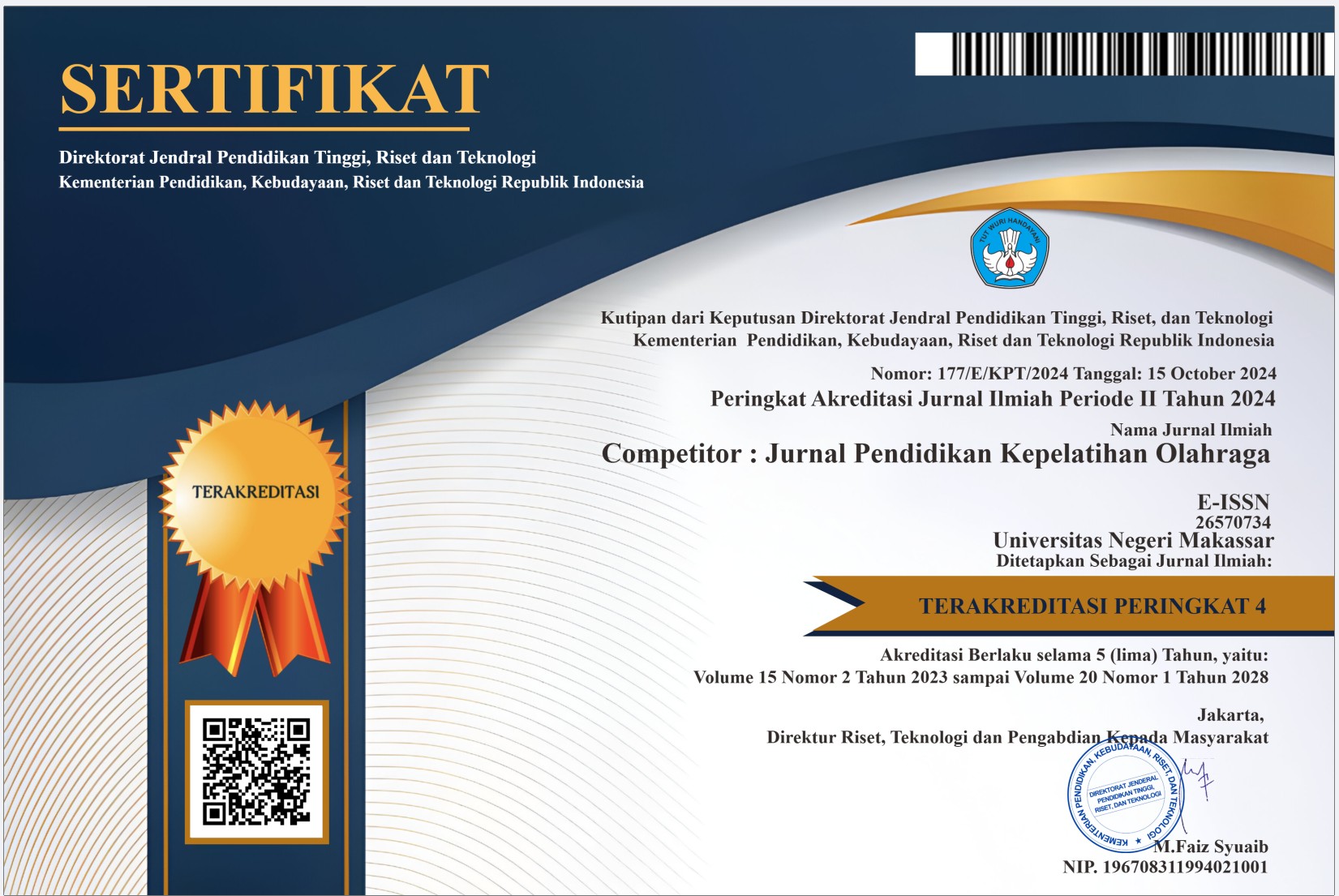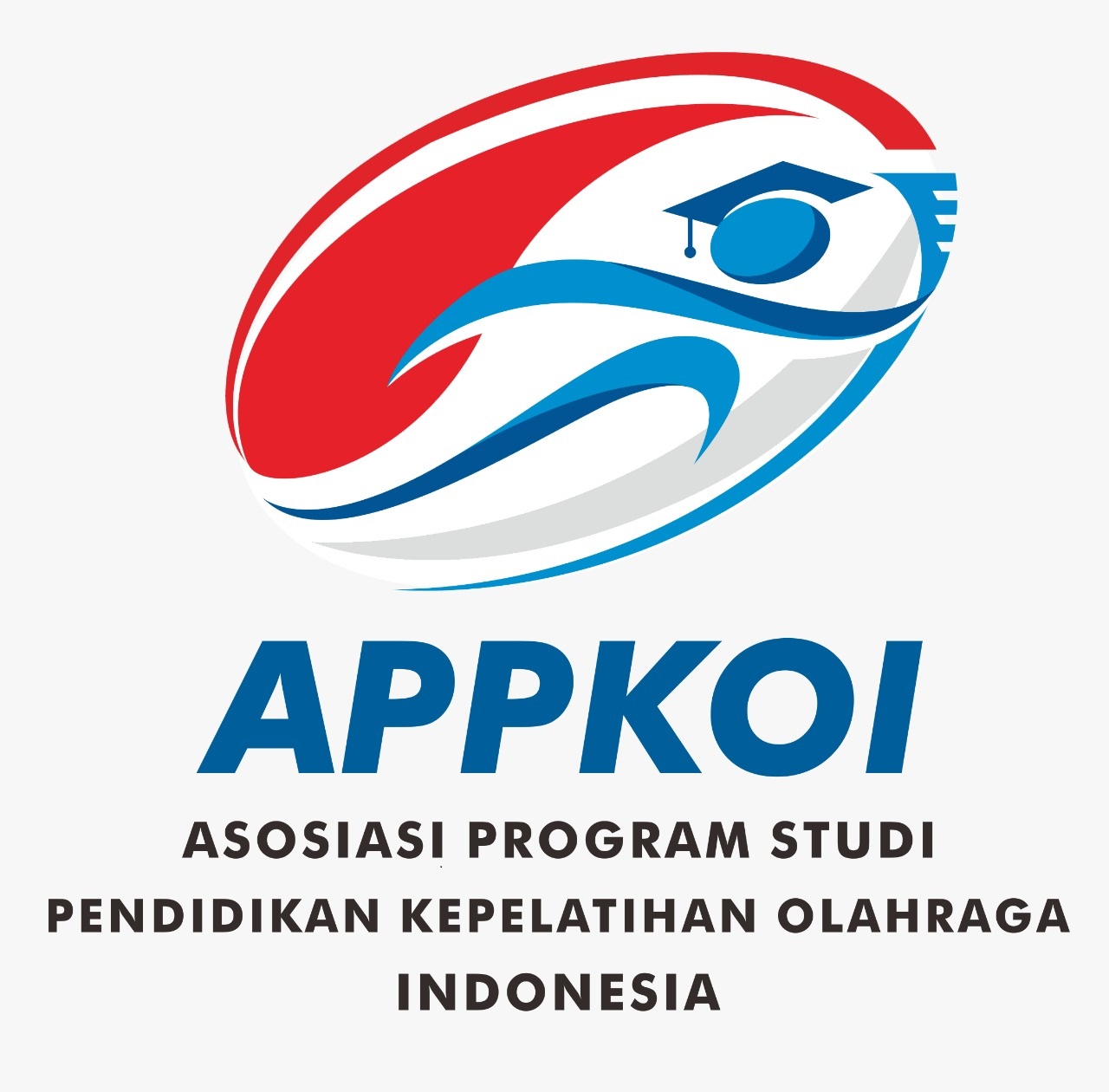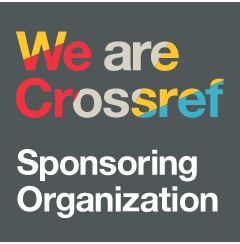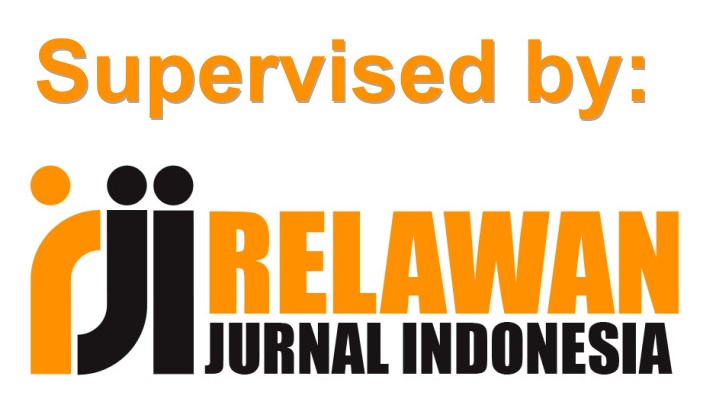Implementation of Balanced Nutrition Principles In Students of Physical Education And Health
DOI:
https://doi.org/10.26858/cjpko.v17i3.358Keywords:
implementation, principle of balanced nutrition, physical education and health studentAbstract
Students of the Sports and Health Education Study Program are expected to serve as role models in adopting a healthy lifestyle, including balanced nutrition practices. This study aims to determine the level of balanced nutrition implementation among Sports and Health Education students at the University of Jambi. The study was conducted using a descriptive quantitative approach with a cross-sectional design. The population consisted of students from the 2021–2024 cohorts, with a sample size of 151 individuals selected through stratified random sampling. The results showed that the overall level of balanced nutrition implementation was in the high category, with an average of 78.75%. This data indicates that students have sufficient awareness and commitment to applying the principles of balanced nutrition. However, there are still weaknesses in certain aspects, particularly in weight monitoring and food consumption variety. These weaknesses are an important note that balanced nutrition practices are not yet fully maximized, so more targeted interventions are needed to strengthen the implementation of these principles. Therefore, the recommendation proposed is the need for environment-based strategies such as providing healthy canteens on campus and integrating applied nutrition material into the learning curriculum.
References
Andriyani, A., Lee, Y. Z., Win, K. K., Tan, C. K., Amini, F., Tan, E. S. S., Thiagarajah, S., Ng, E. S. C., & Ahmad Bustami, N. (2024). Fast food consumption, obesity and nutrient intake among adults in Indonesia. Food Research, 8, 55–65. https://doi.org/10.26656/fr.2017.8(S3).5
Azwar, S. (2022). Reliabilitas dan validitas: Edisi 4.
Barus, J. B. N. B., Sinuraya, J. F., Simanjorang, H. Y., Sinurat, H. S., & Sitanggang, L. P. (2024). Edukasi Peningkatan Pengetahuan Atlet Gulat Junior Tentang Gizi Seimbang dan Pemenuhan Kebutuhan Cairan di Club Gulat PGSI Karo. INCOME: Indonesian Journal of Community Service and Engagement, 3(4), 210–217. https://doi.org/10.56855/income.v3i4.1248
Bosli, F., Mokhtar, S. F., Zainal Aznam, N. H., Jamaludin, J., & Che Hussain, W. S. E. (2021). Gender difference in eating and dietary habits among university students. International Conference on Computing, Mathematics and Statistics (ICMS 2021), 413–419.
Creswell, J. W., & Creswell, J. D. (2017). Research design: Qualitative, quantitative, and mixed methods approaches. Sage publications.
Daher, J., Mountjoy, M., & El Khoury, D. (2025). An Online Nutrition Education Program Targeting Intentions and Related Determinants Towards Dietary Supplement Use: An Application of the Theory of Planned Behavior. Nutrients , 17(3). https://doi.org/10.3390/nu17030557
Ekawati, F. M., Kusnanto, H., Lestari, P., Vidiawati, D., Novitasari, D. A., Widyahening, I. S., & Sanci, L. (2025). The health and wellbeing of undergraduate students in Indonesia: descriptive results of a survey in three public universities. Scientific Reports, 15(1). https://doi.org/10.1038/s41598-025-90527-w
Elliott, P. S., Devine, L. D., Gibney, E. R., & O’Sullivan, A. M. (2024). What factors influence sustainable and healthy diet consumption? A review and synthesis of literature within the university setting and beyond. In Nutrition Research (Vol. 126, pp. 23–45). Elsevier Inc. https://doi.org/10.1016/j.nutres.2024.03.004
Habibah, N. U., Amri, A. N., & Kusuma, R. J. (2025). The Relationship of Dietary Intake and Nutritional Status to the Risk of Eating Disorders among University Students in Yogyakarta, Indonesia (Vol. 17, Issue 1).
Huong, C., Chua, J. L., Ng, R. Y., Panse, D. K., Misra, S., & Sumera, A. (2022). Knowledge, attitude and practices (KAP) towards anaemia among female university students in Malaysia: A cross-sectional survey. Malaysian Journal of Nutrition, 28(2), 203–215. https://doi.org/10.31246/mjn-2021-0067
KEMENKES. (2014). Peraturan Menteri Kesehatan Republik Indonesia Nomor 41 Tahun 2014.
Kubik, M. Y., Lytle, L., & Fulkerson, J. A. (2005). Fruits, vegetables, and football: Findings from focus groups with alternative high school students regarding eating and physical activity. Journal of Adolescent Health, 36(6), 494–500. https://doi.org/10.1016/j.jadohealth.2004.05.010.
Peltzer, K., & Pengpid, S. (2017). The Association of Dietary Behaviors and Physical Activity Levels with General and Central Obesity among ASEAN University Students. AIMS Public Health, 4(3), 301–303. https://doi.org/10.3934/publichealth.2017.3.301
Ramadhani, Y. (2022). Hubungan Pengetahuan dan Sikap dengan Perilaku gizi Seimbang pada Mahasiswa Fakultas Kesehatan Masyarakat Universitas Hasanuddin di Masa Pandemi Covid-19.
Rhea, K. C., Cater, M. W., McCarter, K., & Tuuri, G. (2020). Psychometric Analyses of the Eating and Food Literacy Behaviors Questionnaire with University Students. Journal of Nutrition Education and Behavior, 52(11), 1008–1017. https://doi.org/10.1016/j.jneb.2020.05.002
Sabta Aji, A., Surendran, S., Kusuma Rahayu, H., Kurniasari, Y., Kurnia Triastanti, R., Ahmadah, I., Handayani Lailatul Sekar Kusuma, F., Nabiella, A., Afrohi Laila, A., Khoyriyah, A., Pratiwi, S., Candra Ratnasari, I., & Putri Miftakhul Jannah, S. (2022). Eating Habits and Lifestyle Changes during COVID-19 Pandemic among Indonesian College Students: Results from Indonesia Dietary and Lifestyle Changes (IDLC) Study. In Malaysian Journal of Medicine and Health Sciences (Vol. 18, Issue SUPP12).
Schaafsma, H. N., Caruso, O. T., McEachern, L. W., Seabrook, J. A., & Gilliland, J. A. (2025). Understanding Food Literacy Intervention Effectiveness: Postsecondary Students’ Perspectives on How a mHealth Food Literacy Intervention Impacted Their Dietary Behaviors. Journal of Nutrition Education and Behavior. https://doi.org/10.1016/j.jneb.2025.01.003
Setia, M. S. (2016). Methodology series module 3: Cross-sectional studies. Indian Journal of Dermatology, 61(3), 261–264. https://doi.org/10.4103/0019-5154.182410
Suryabrata, I. A., Ardini, W., & Kunarisasi, S. (2023). The association between nutrient intake and physical activity with nutritional status of undergraduate medical students. Jurnal Kedokteran Dan Kesehatan Indonesia, 313–320. https://doi.org/10.20885/jkki.vol14.iss3.art1
Published
Issue
Section
License
Copyright (c) 2025 Alif Yulian Akbar, Sukendro, Grafitte Decheline (Author)

This work is licensed under a Creative Commons Attribution 4.0 International License.





















